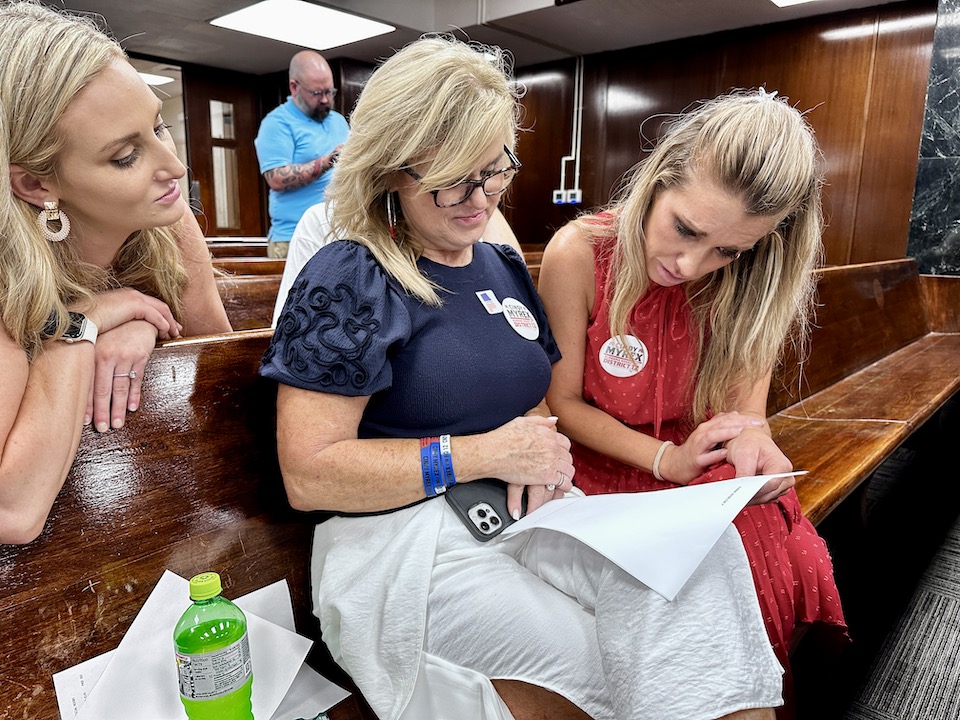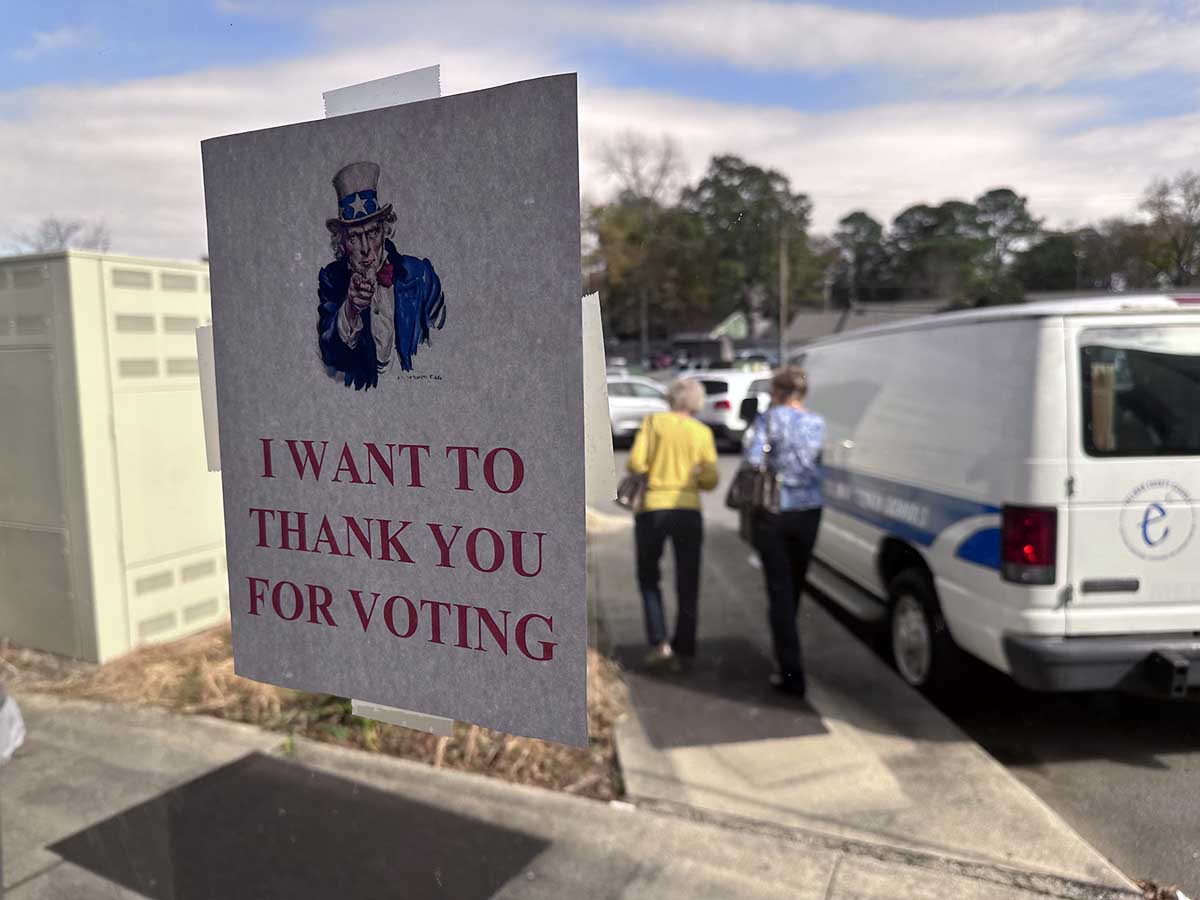Couple builds energy efficient house from scratch
Published 2:15 pm Tuesday, May 17, 2016

- DAVID LE/Staff photoPartners Lindsay MacLean, left, and Courtney McLeod, of Salem, are building a "Tiny House" that they will be shipping across the country to a cacao farm in Hawaii later this year. Here, they stand in their future kitchen, a few feet in front of a six-foot bathroom in the back.
SALEM, Mass. — A millennial couple is building a ‘tiny house’ in Massachusetts and moving it to Hawaii to live on a farm.
“We’ve gone through life feeling the burden of student loans and how trapping that can be financially,” Lindsay MacLean, 24, said. “We’re very interested in not having a mortgage and owning our own home.”
Trending
Along with no mortgages, tiny homes are known for saving tons of money and energy.
In 2015, about 40 percent of U.S. energy usage were from homes and businesses according to the U.S. Energy Information Administration. Tiny houses are big on energy efficiency and maintain a much smaller space in terms of environmental control, according to Marwan Ghandour, Director of Master of Design in Sustainable Environments and professor of architecture in the College of Design at Iowa State University.
“Tiny homes minimize the area of volume occupancy of an individual or a family without the division of rooms,” Ghandour said. “It’s minimizing the area of each of these activities. You use the living room as the dining room and flip the table to minimize the amount of area.”
In terms of consuming material and electricity, it’s considered to be one of the best ways to be energy efficient, he added.
Today, Courtney McLeod and Lindsay MacLean’s new tiny house is a box frame measuring 24 feet long, and 8 1/2 feet wide, with a graded roof between nine and 10 1/2 feet high on a custom-built, two-wheeled trailer. But when it’s done, the box will be a full-fledged “tiny house” that the couple will take with them to Hawaii.
It’s less than a quarter of the size of their first Salem, Massachusetts apartment. The house will run on the power provided by a single outlet and allows the couple to live the free life that, to this point, they’ve only dreamed of.
Trending
They said they’re interested in leaving the high pressure, high-speed way of life in New England behind.
Journey begins with a promise
The plan to build their tiny house started early last year with a contract McLeod and MacLean signed with each other.
“It was a half-joke,” McLeod, 31, said. “We were doing this with a former student of mine who came to visit. We were talking about the things we wanted in life.”
MacLean said a question came up regarding what they would do if money wasn’t an option and they could have anything they want.
“We both chose this,” MacLean said.
But “this” isn’t just a small house — it’s a complete change in lifestyle, according to MacLean.
Everything in their life has to fit into that space. But that won’t be an issue, McLeod said, since they’ve already made it work.
The couple’s first Salem apartment was a top-floor apartment with about 1,200 square feet of space.
“I was thinking that a family could use this so much better than us,” MacLean said.
Today, the duo has consolidated all of their possessions into less than 300 square feet of space, McLeod said.
Engineered to handle hurricanes
By June, McLeod and MacLean had bought a trailer designed specifically to fit a set of floor plans they bought on the internet.
They started building the floor toward the end of last year, and the walls went up earlier this year. Today, the couple is just a few weeks away from shipping their home across the country in an incomplete state — the exterior will be finished, while the interior will be a work in progress.
But that doesn’t mean the home isn’t structurally sound.
“We’ve doubled the hurricane ties on the rafters,” MacLean said.
The hurricane tie is a specific design choice, one that the couple is going overboard with as they put the structure together, according to McLeod.
The trailer will be picked up by a company and driven cross-country starting between June 10 and 15, McLeod said. It will be on the West Coast by June 28, put on a boat, and shipped to Hawaii, where it’ll arrive between July 12 and 18.
Along the way, the structure will face sustained hurricane-force winds every moment the company transporting the tiny house drives north of 74 mph — the sustained-wind threshold for a hurricane to land a “Category 1” designation on the Saffier-Simpson hurricane wind scale.
“The walls themselves are bolted down with 7-inch, 5-by-8 bolts that run into these giant king studs and the framing,” McLeod said. “The roof has been the terrifying part, and I’m still skeptical. There are probably more nails in those rafters and plywood than you care to imagine.”
Becoming good Hawaiians
The trip to Hawaii will have three phases to it. The tiny house’s arrival will complete the first phase, and McLeod will leave for the Aloha State on July 12, she said. MacLean will head out West on Aug. 18.
When they each arrive, the tiny house will be waiting for them on a cacao farm in Kapaa, a small town on the east coast of Kauai, the second-most western Hawaiian Island.
In addition to her teaching duties and time spent building the tiny house, McLeod is a grant writer for the farm they’ll live at. They’ll also work on the farm in exchange for the right to settle there, they said.
“They say a good Hawaiian has three jobs at least, so I’m there,” McLeod said. “I’m ready. I’m a good Hawaiian at this point.”
When asked what a day in the life of a farmer in Kapaa is like, MacLean listed the phases of the day: “Wake up with the sun. Have coffee outside. Work on the farm. Maybe [McLean] researches grants.”
“For me, there’s time to just enjoy what I’m looking at around me as I do that,” McLeod said, smirking.
Life in Hawaii will be different than Salem, McLeod said, because it lacks the 9-to-5 structure so many in New England are used to.
“It’s going to be a lot more free flow than what we see as the typical grind,” she continued. “You enjoy doing it because you’re in a beautiful place, and culturally they value those moments of calm and serenity, being present in those moments around you and putting value in the setting around you.”
“Hawaii has two speeds,” MacLean cut in, “slow and slower.”
Luca writes for the (Massachusetts) Salem News.





